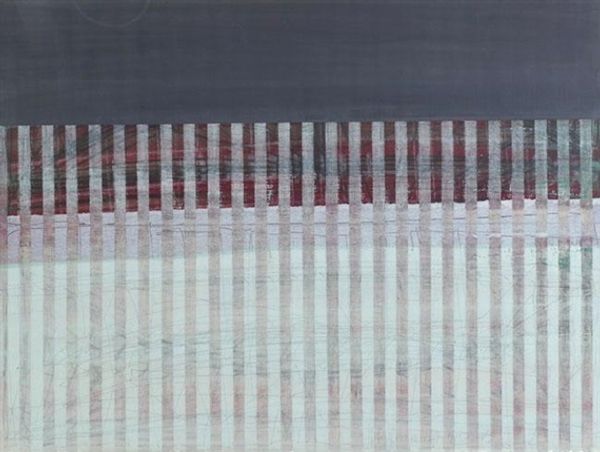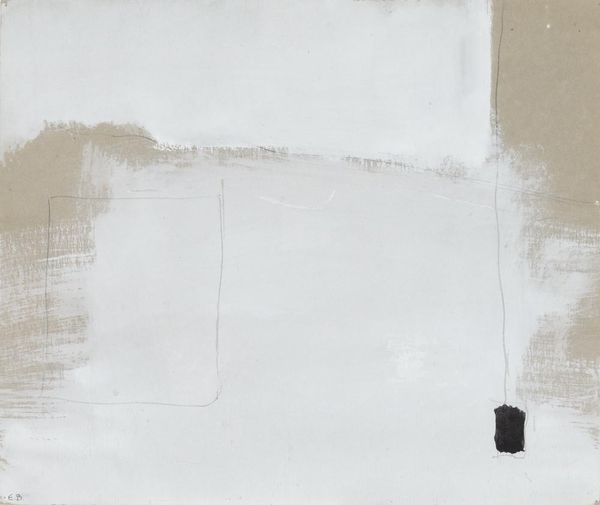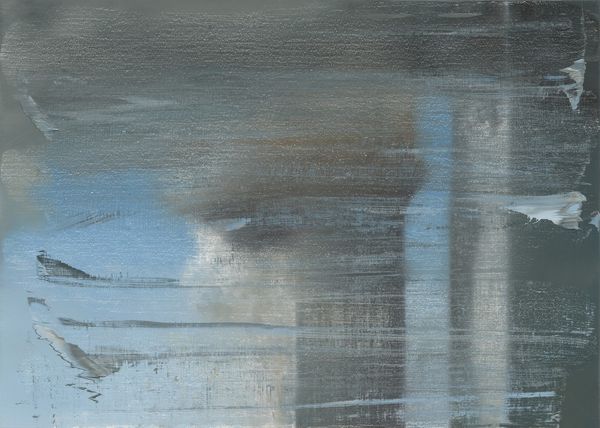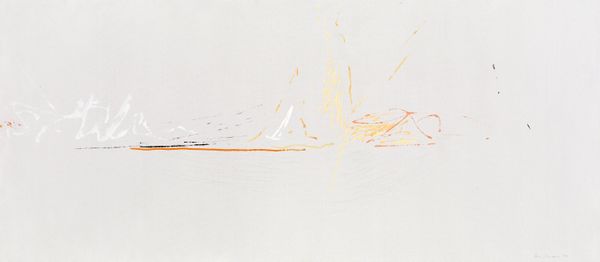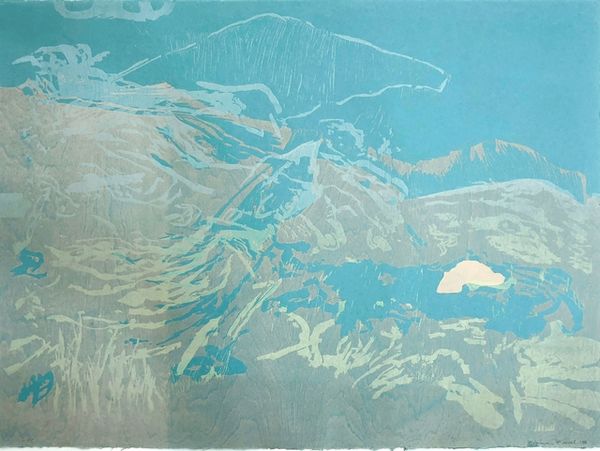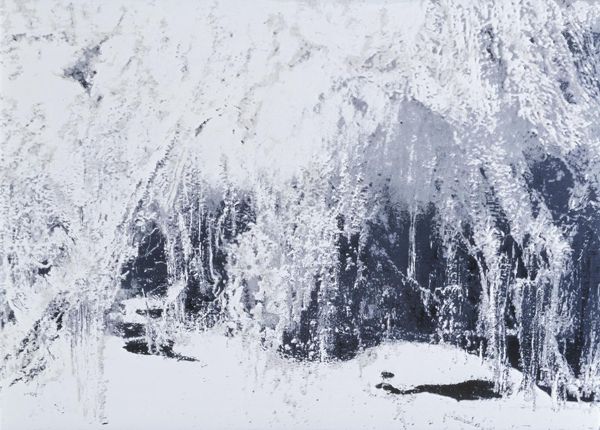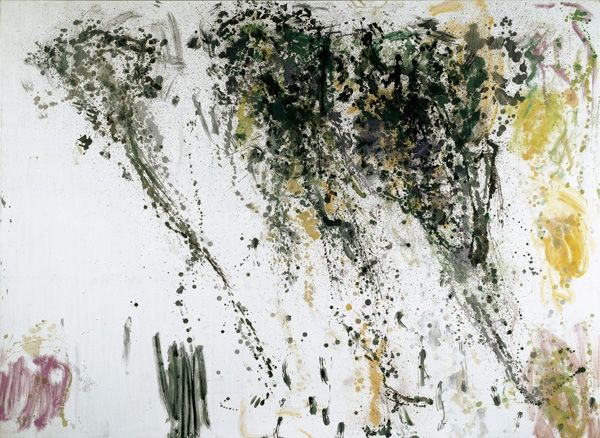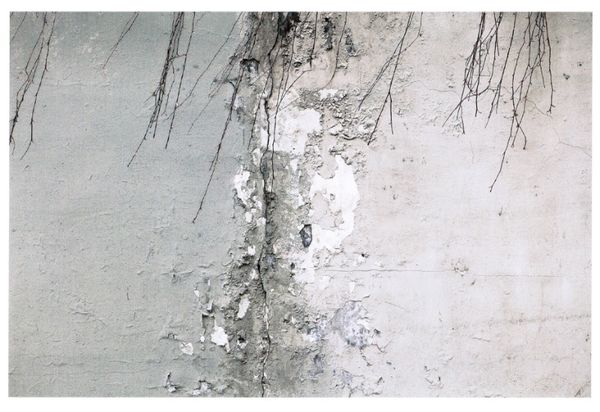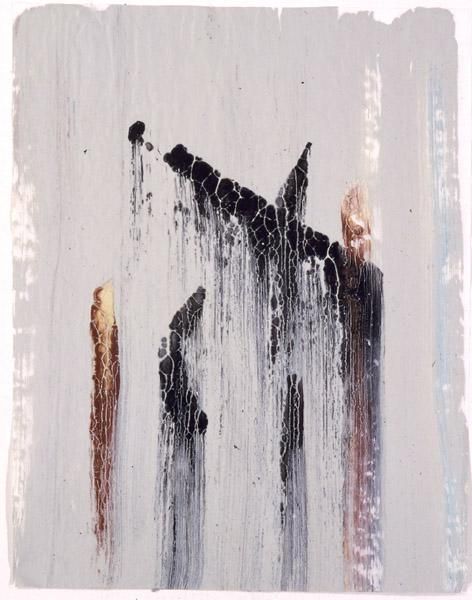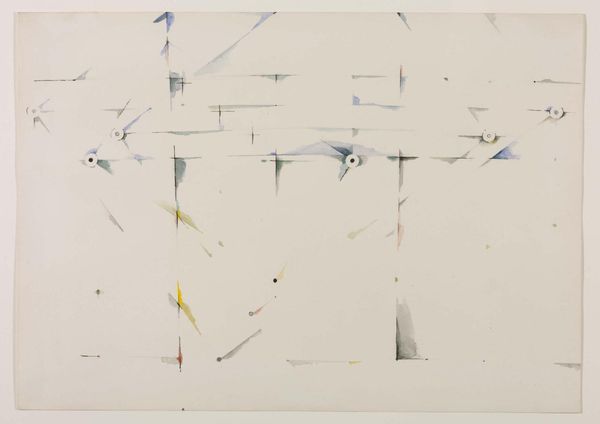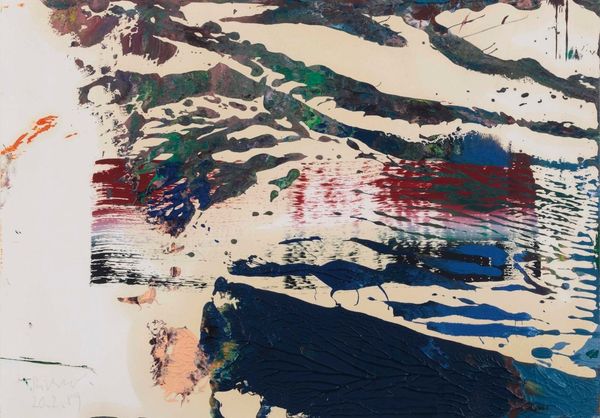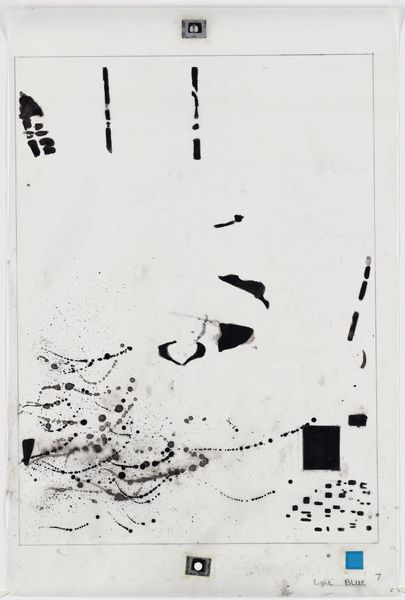
mixed-media, acrylic-paint, impasto
#
abstract-expressionism
#
abstract expressionism
#
mixed-media
#
acrylic-paint
#
impasto
#
abstraction
#
line
Copyright: Antoni Tapies,Fair Use
Editor: Here we have Antoni Tapies' "Verticales en bas," created in 1968. It's a mixed media work, utilizing impasto and acrylic paint. There's a stark simplicity to it, almost like a child's drawing, yet something about the rough texture gives it a real weight. How do you interpret this work, seeing those vertical lines? Curator: Looking at Tapies’ choice of mixed media here is critical. We aren't just looking at paint on canvas; it is a deliberate layering. The application of the impasto creates a tactile surface, demanding to be not only seen but felt. In a materialist reading, the deliberate combination of base and refined materials levels a perceived hierarchy between high art and the everyday. Do you see that here, in the rawness of his markings? Editor: I do! It challenges that separation. The way he's seemingly haphazardly applied the paint contrasts with what looks like carefully placed vertical lines, and, almost in contrast, seems haphazard in relation to the geometric framing shapes.. Was he trying to democratize the art-making process itself? Curator: Precisely! Tapies was working in a time of immense social and political upheaval. His work is imbued with a deep understanding of process, mirroring his beliefs. Notice how the starkness of the materials engages with the context of post-war Europe and Spain under Franco. He's forcing a consideration of what is consumed and what is left behind in the act of creation and political upheaval. Is this waste or repurposing? Editor: That's a powerful connection I hadn't considered! Thinking about the era helps decode some of that roughness and the somewhat rebellious feel of the materials used. Curator: And ultimately reveals a potent commentary on art production itself and society's structures, then and perhaps now. Editor: Thanks, that sheds completely new light on Tapies and his intent. Curator: Indeed. Reflecting on the intersection between the "what" and the "how" enriches our viewing and enlivens the historical narrative surrounding the piece.
Comments
No comments
Be the first to comment and join the conversation on the ultimate creative platform.
